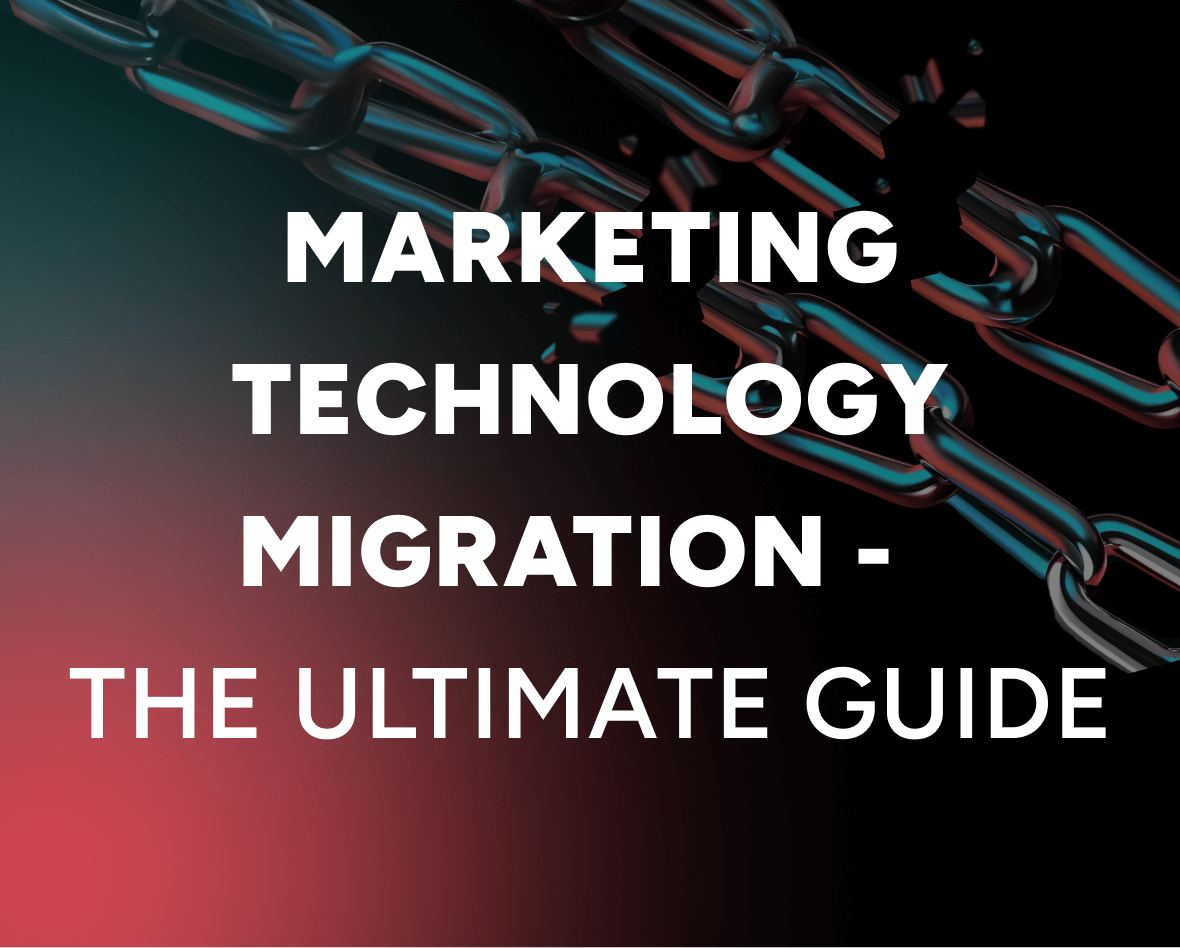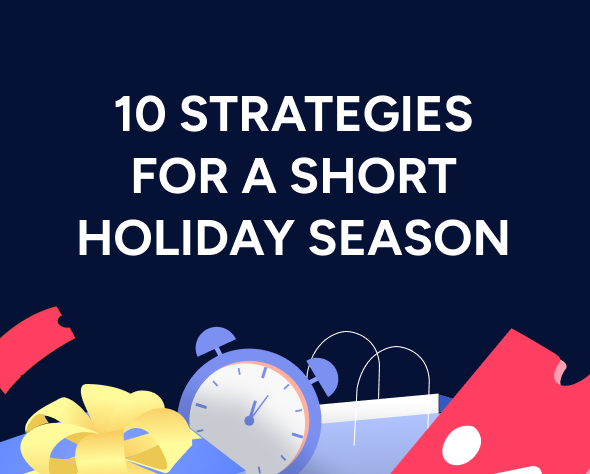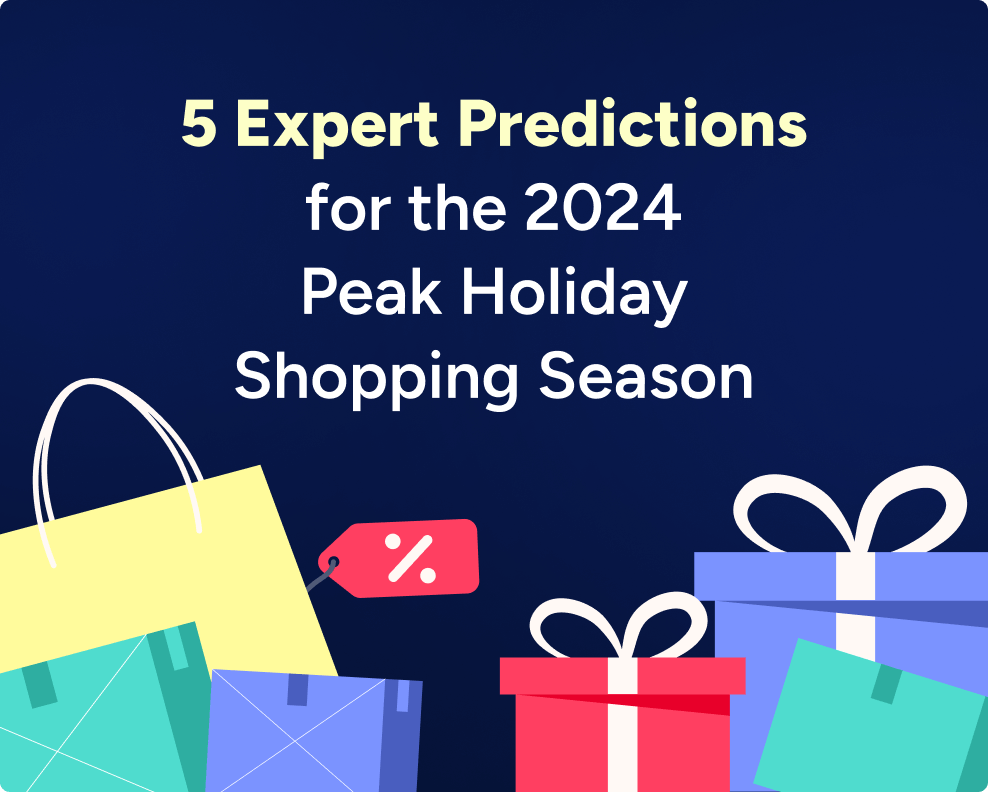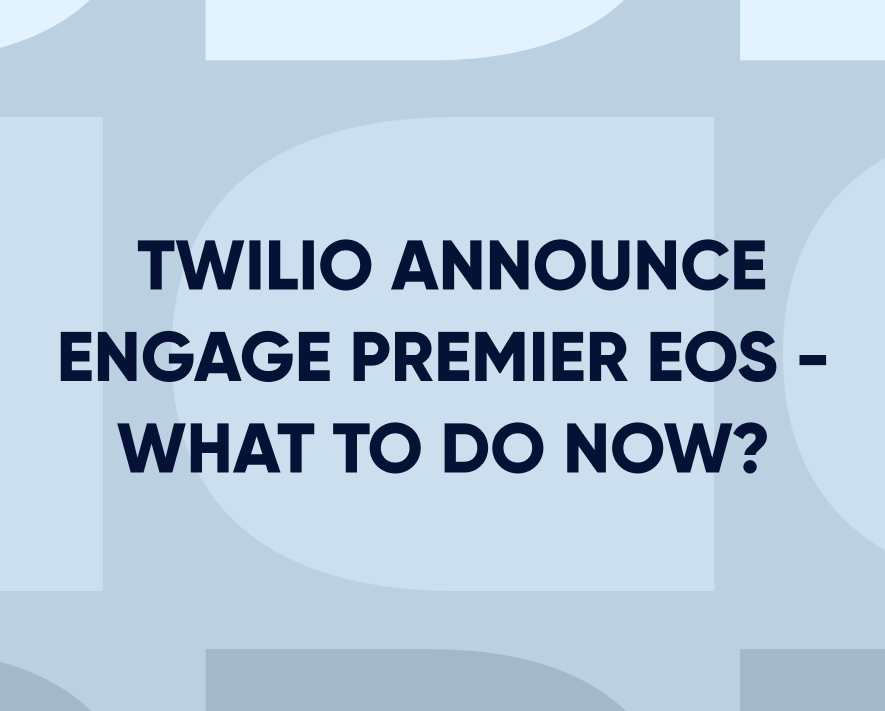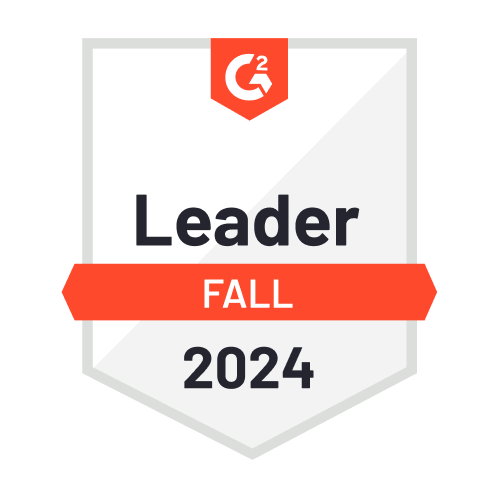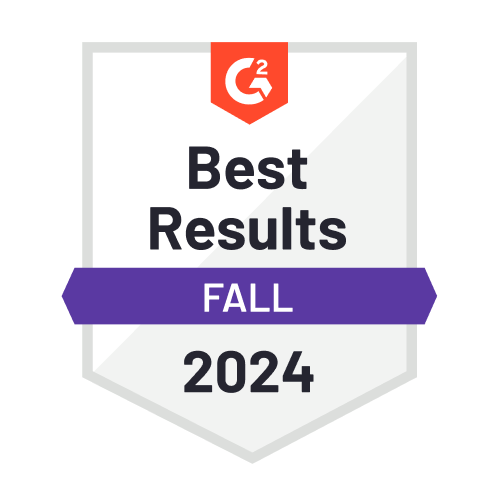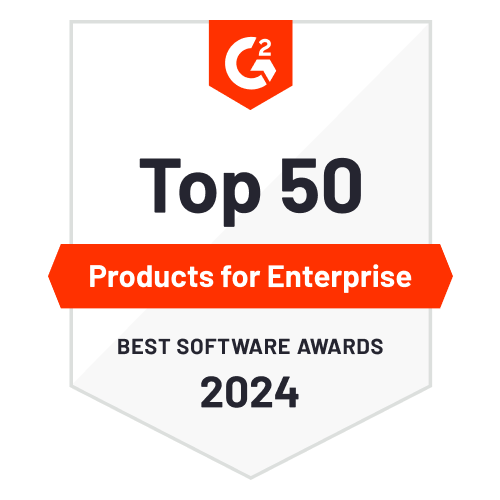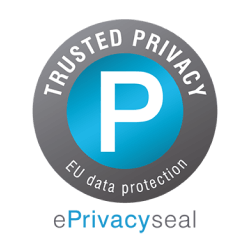Customer targeting: What it is, how it works, examples, and more
Accurate customer targeting is the foundation of any successful marketing strategy. It enables you to find the correct target audiences for each message and ideally lets you create consistent, personalized experiences across all channels for every customer.
Updated on 15 Aug 2024
In the past, this was nearly impossible because of disconnected systems and limited segmentation options offered by most marketing tools. Marketers not only had to unify their customer data to get the insight they needed to understand their customers but also had limitations in how they could segment and reach them.
With today’s advances in AI and segmentation software, marketers can get much more granular and effective in their targeting efforts.
They’re not limited to standard characteristics like devices, locations, and technologies. They can also target customers based on predicted behaviors, such as likelihood to purchase or engage on a specific channel. Plus, marketers can use modern marketing automation and personalization tools to create unified experiences tailored to each customer’s preferences in terms of channels, engagement times, and much more.
In this guide, you’ll learn how to target your customers effectively and create a consistent journey for them. This will help you drive more revenue in less time by segmenting your customers, reaching them on the right channels (and at the right times), and personalizing their experience.
Insider allows you to target and reach customers across 12+ channels with 120+ ready-made attributes for precise and effective segmentation, personalization, and journey orchestration. Request a demo or see how it works for yourself.
What is customer targeting?
Customer targeting is the process of focusing on a specific group of customers to engage them with relevant content, messaging, and product recommendations. By targeting customers based on individual behaviors and characteristics, you can personalize your marketing campaigns, connect with your customer base with greater precision, and maximize your marketing efforts.
Customer targeting started back in the direct mail era of marketing and advertising. It continued in the early days of digital marketing, as email became a popular marketing channel. Back then, you could target customers based on standard characteristics like locations, devices, and demographics.
As digital marketing has evolved, so have our targeting capabilities. Modern marketing tools let you target customers based not only on characteristics and channel-specific behaviors but also on interactions across the entire customer journey. The most advanced technologies today use AI to help marketers get more granular in reaching their ideal customers.
3 steps to accurate, granular, and effective customer targeting
In this section, we’ll go over each step of an effective customer targeting strategy. We’ll use Insider, our cross-channel marketing platform, to show you real-life examples of each step and the features that make today’s customer targeting more precise than ever.
Step #1: Unify your customer data
Before you can successfully target your audience, you need to make sure all your customer data is readily available in a single platform. That way, you have everything you need to know about your customers in one place, without missing key details.
That’s why many companies use customer data platforms (CDP) as the foundation for their marketing activities. For example, marketing CDPs such as Insider can unify your customer data from hundreds of online and offline sources, segment customers, and let you activate your data across channels like web, email, push notifications, SMS, and WhatsApp — all from a single platform.
After consolidating your data into a 360-degree customer view, you can understand customers’ entire experience with your brand, build meaningful customer relationships, and reach your target market more effectively.
For example, here’s the 360-degree customer view in Insider, which builds a firm foundation for effective customer targeting:
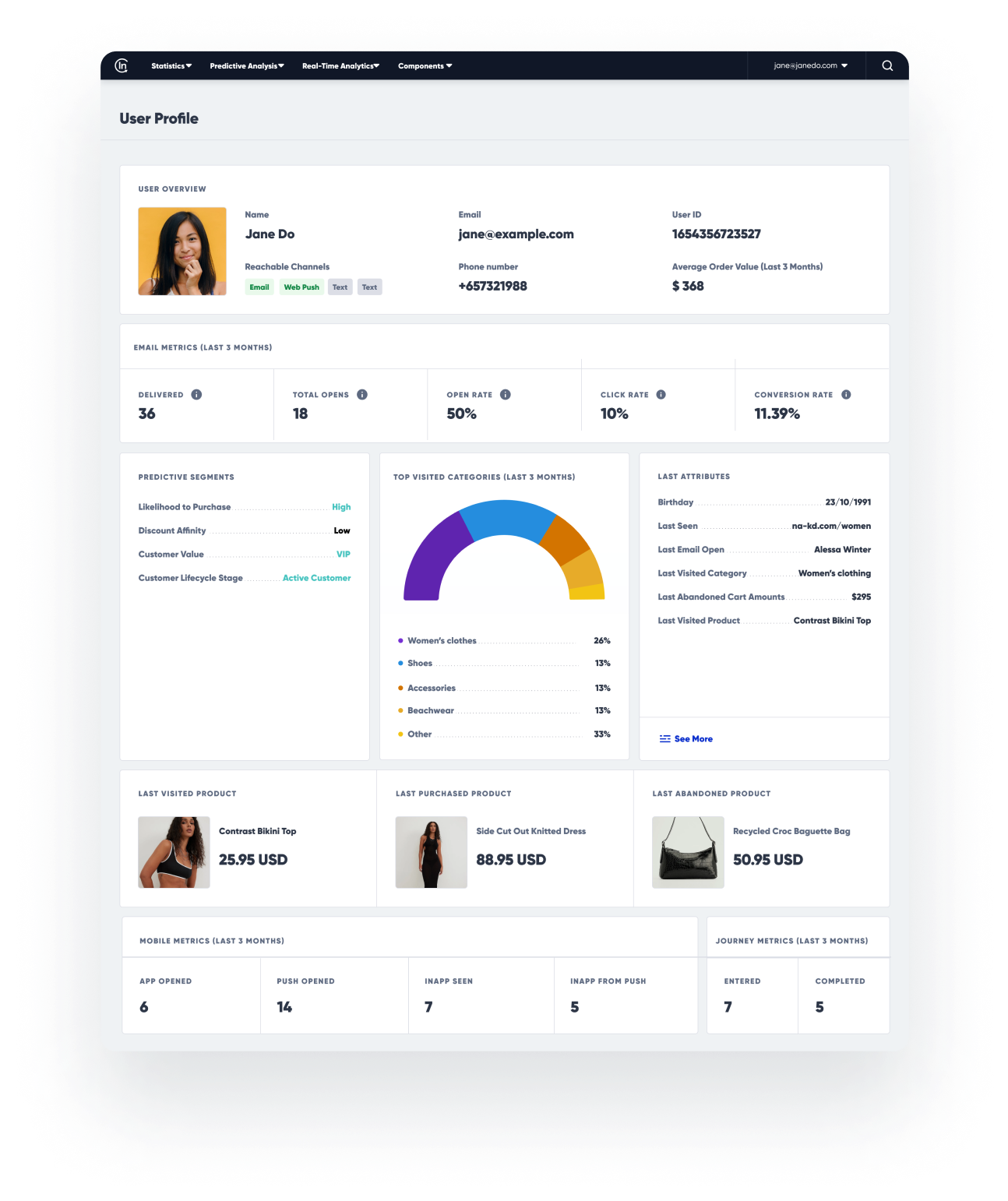
In the 360-degree view above, there are several data points relevant to customer targeting:
- Last visited, purchased, and abandoned products.
- The customer’s reachable channels.
- Their average order value (AOV).
- Top visited categories,
- And much more.
The 360-degree view in Insider also shows the customer’s predicted behaviors. In the example above, our AI-powered algorithms have deduced that Jane has a high likelihood to purchase, low discount affinity, and is an active customer.
Having all of this customer data in one place instead of being siloed in different locations makes it possible to target each customer or buyer persona and address their pain points effectively. Insider’s 360-degree view has helped companies unify their data, build personalized customer journeys, and execute their marketing plans with extremely fast time to value:
- Clarins used Insider’s unified customer view to drive a 45% increase in lead capture and a 30x ROI in 12 weeks.
- Belgian Cycling Factory accelerated its campaign execution by 6X with Insider’s marketing CDP and delivered ROI in 6 weeks.
- Allianz used Insider to develop unified customer profiles and deliver ROI within days.
For more on the various CDPs that can help unify customer data, check out our in-depth look at the best customer data platforms.
Step #2: Utilize detailed customer segments
Once your customer data is in place, you can segment your audiences and reach various types of customers more effectively. Insider’s advanced segmentation allows you to segment your customers using a mixture of three broad types of audiences.
Standard audiences
Standard audiences can include demographics, devices, platforms, etc. They’ve been used for customer targeting for decades and can still be highly effective. For example, there are 120+ attributes in Insider’s system, including:
- Devices.
- Locations.
- Behaviors.
- Operating systems.
- Interests in certain attributes (price, color ranges, etc.).
Pre-defined audiences
Pre-defined audiences are automatically created by Insider. As you can see below, you can easily target customers who:
- Abandoned a product page.
- Abandoned an item in their cart.
- Interacted with your brand on a channel.
- Made a purchase during a specific period.
- Installed or uninstalled your mobile app at a specific time.
- And more.
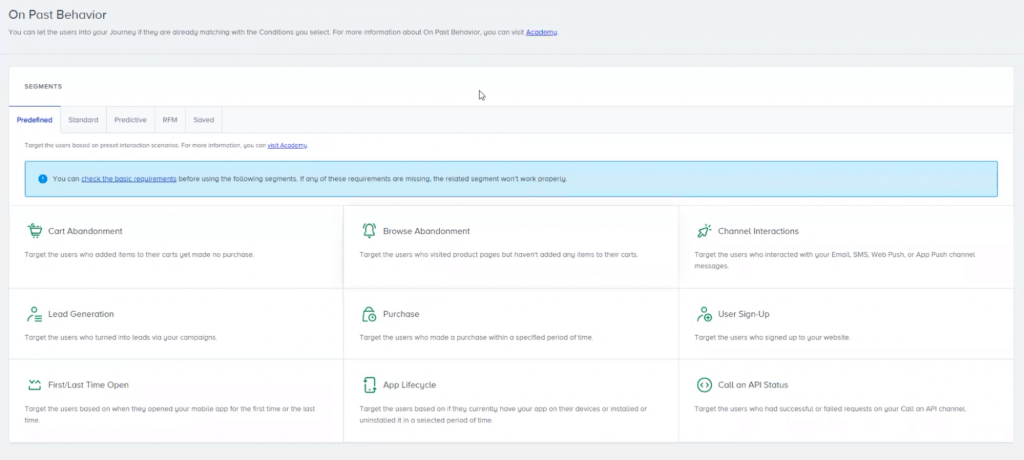
Companies can achieve outstanding results by targeting customers based on these predefined characteristics. Jewelry company W.KRUK increased its revenue per session by 51% with Insider’s cart abandonment segmentation. In another instance, Marks & Spencer achieved a 15.1% recovery rate for cart abandoners, getting a 353x higher rate than the industry average.
With Insider, you can target pre-defined segments directly, or use them to make your customer targeting even more precise. For example, here’s how you could build a micro-segment of cart abandoners, with more specific cart abandonment criteria:
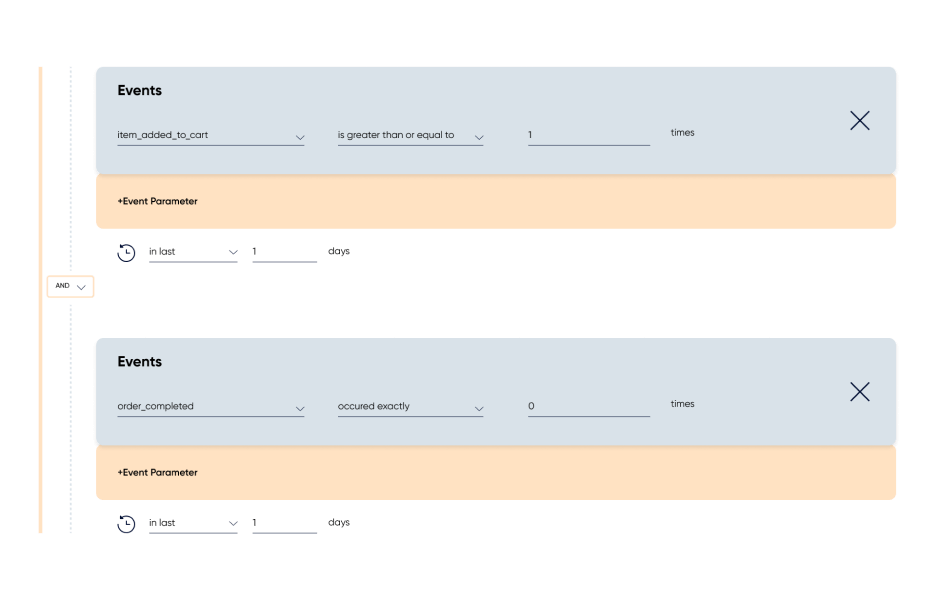
When setting event parameters, you could target customers who’ve added at least one item to their cart, but only message them if they have purchased nothing in the last 24 hours to avoid annoying recent buyers. This way, you can get specific about who you want to reach.
AI-powered predictive audiences
Many marketers now have access to even more powerful segmentation capabilities through AI-powered predicted characteristics. In Insider, these are called predictive audiences (PA) and allow you to target customers based on their:
- Likelihood to purchase.
- Customer lifecycle status.
- Attribute or discount affinity.
- Likelihood to engage on a specific channel.
- And much more.
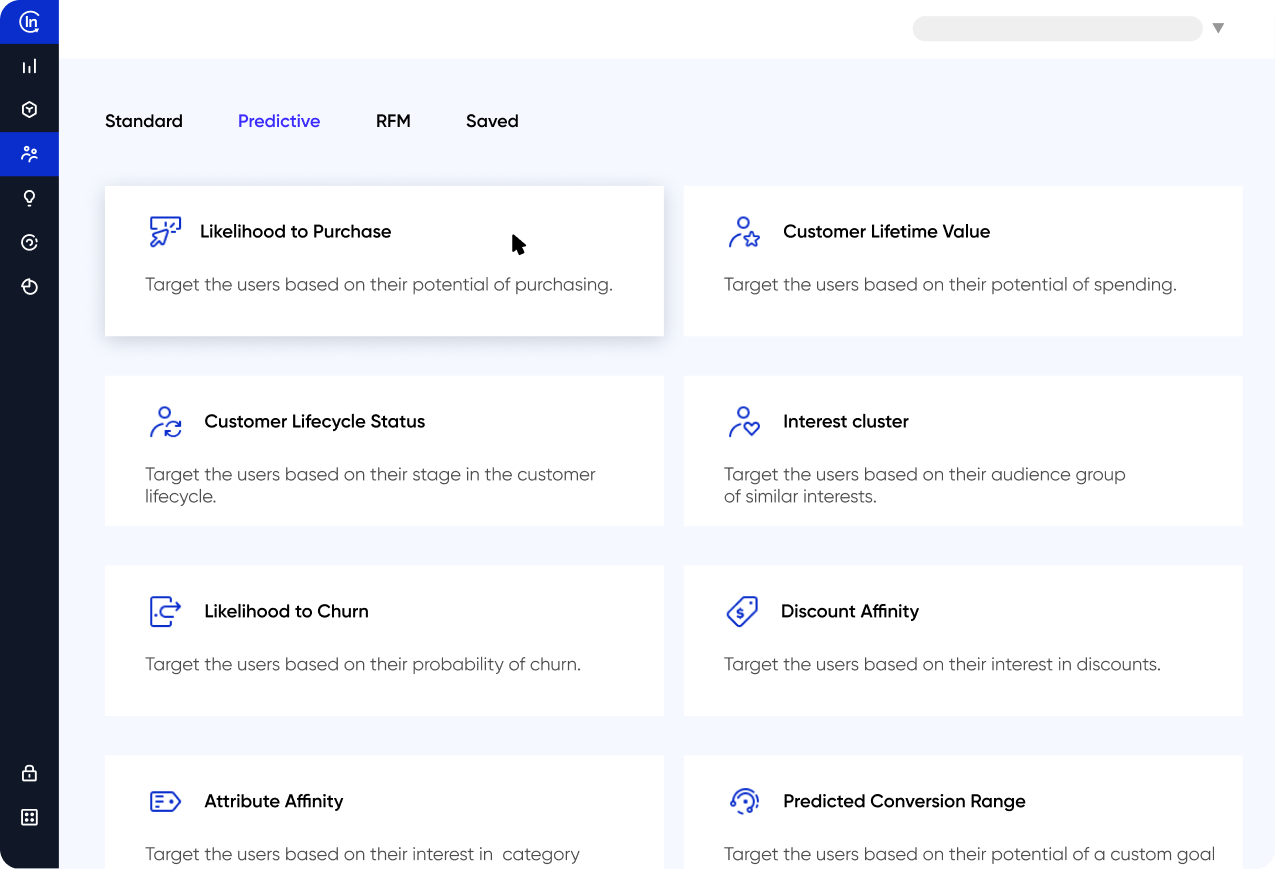
With Insider, you can combine standard, pre-defined, and AI-powered audiences to build highly targeted segments.
For example, you can target users from a specific geographic region that use a specific type of device, have spent a certain amount with your brand, and have a high likelihood of purchasing a given item. This allows you to concentrate your marketing messages and personalization efforts on the most important customers.
Predictive segmentation can deliver some of the most impressive gains we’ve seen, helping marketing teams improve metrics like return on ad spend (ROAS) through more detailed customer targeting. For example, low-fare airline Flyadeal boosted its ROAS by 80% using predictive audiences, while U.S. Polo Assn. used the same features to improve ROAS by 135%.
Step #3: Target customers with cross-channel personalization and journey orchestration
When your customer targeting starts scaling across multiple segments and channels, you’ll almost always need additional time, energy, and development resources to execute your campaigns successfully. But while many tools and platforms provide the ability to segment, few give you the ability to personalize all touchpoints and architect journeys across a range of channels.
That’s why Insider enables you to create a truly personalized customer experience across all channels. As we mentioned, our platform can unify your customer data and help you target customers effectively, supported by its AI-powered predictive segmentation capabilities.
From there, you can personalize your messaging, content, and product recommendations across 12+ native channels, including email, on-site, push notifications, SMS, WhatsApp, TikTok, and many more:
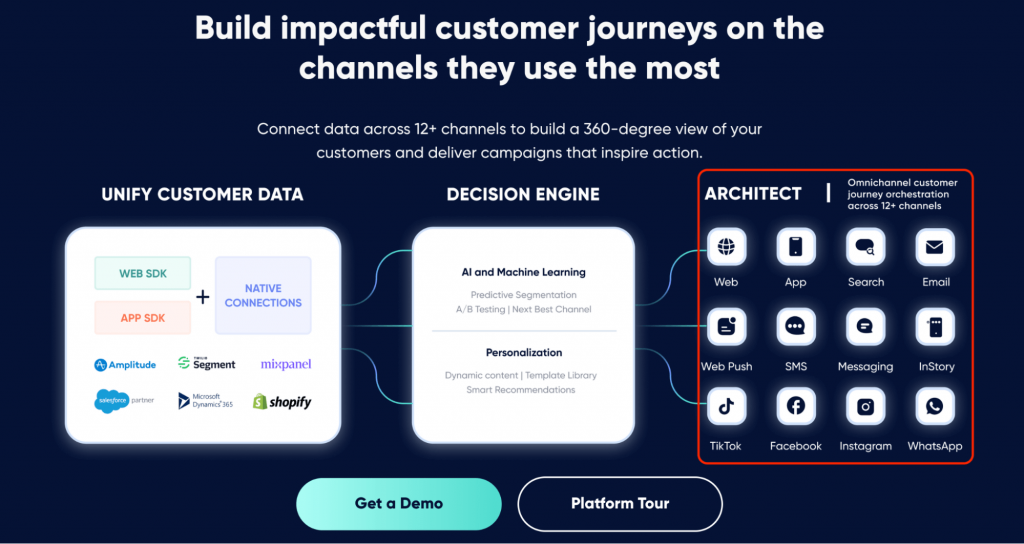
Insider’s broad channel support enables you to tailor all of your customers’ interactions with your brand to their interests and preferences. Here are just a few of Insider’s personalization capabilities across channels:
- On-site and in-app personalization: Insider can customize every aspect of your site or mobile app according to each customer’s preferences, from content to messaging and product recommendations. This can help you boost conversion rates and maximize your marketing budget.
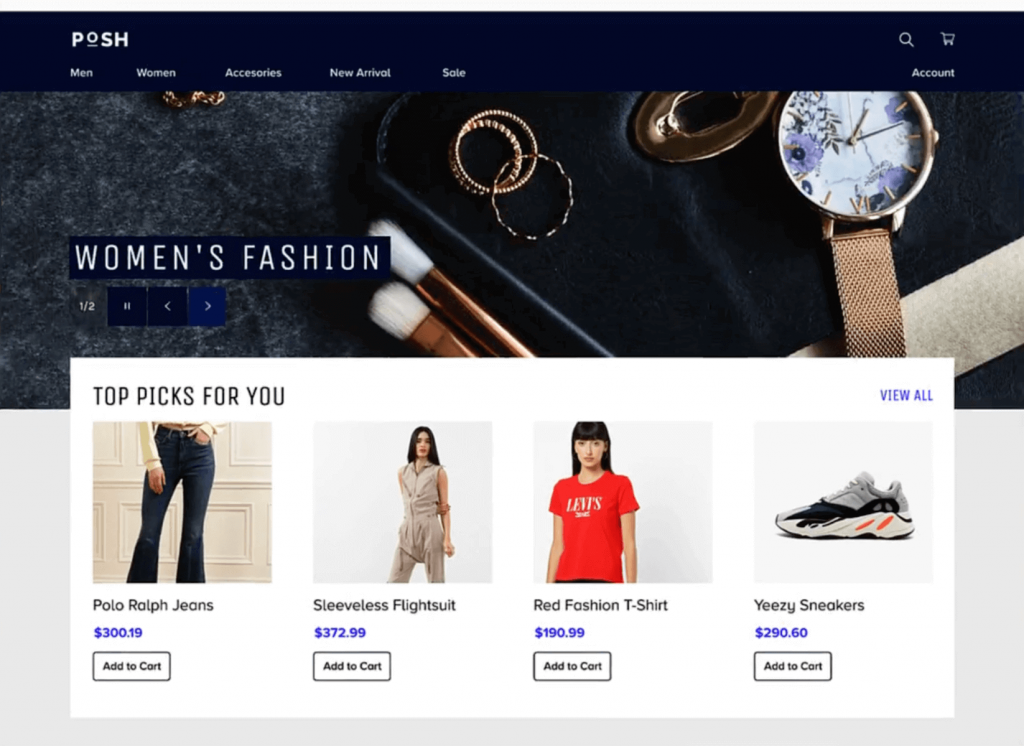
- WhatsApp: As a Meta-verified Business Solution Provider, Insider lets you use WhatsApp to send personalized promo messages, price drop alerts, event reminders, cart recovery prompts, and more. More advanced companies can even create an end-to-end shopping experience in the app using WhatsApp’s conversational commerce feature.
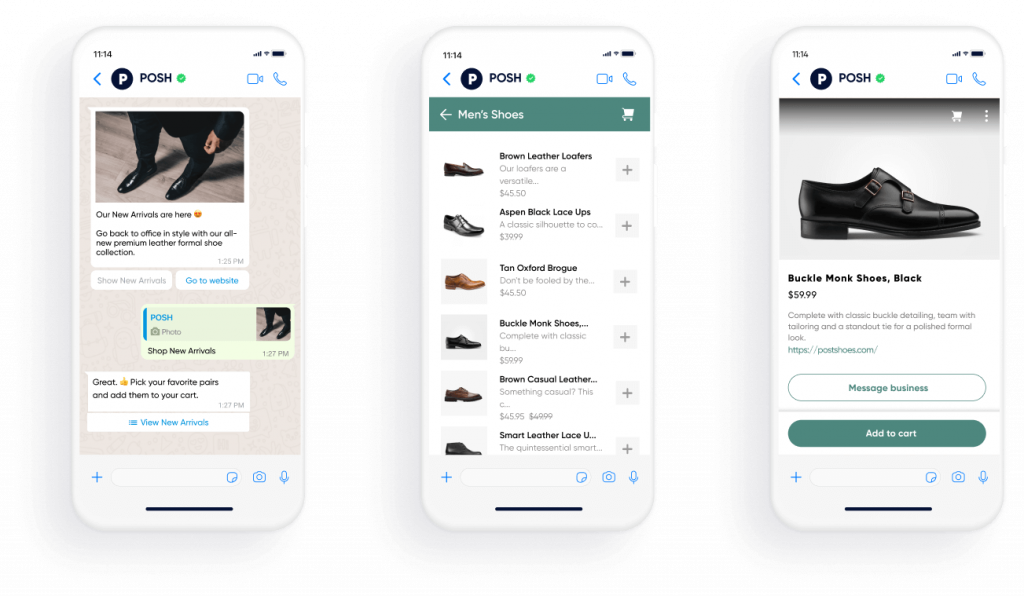
- Push notifications: Insider offers a vast array of web and mobile app push notification types. You can use these to reach both known customers and unknown visitors with customized offers that grab their attention and bring them back to your site in a cost-effective manner.
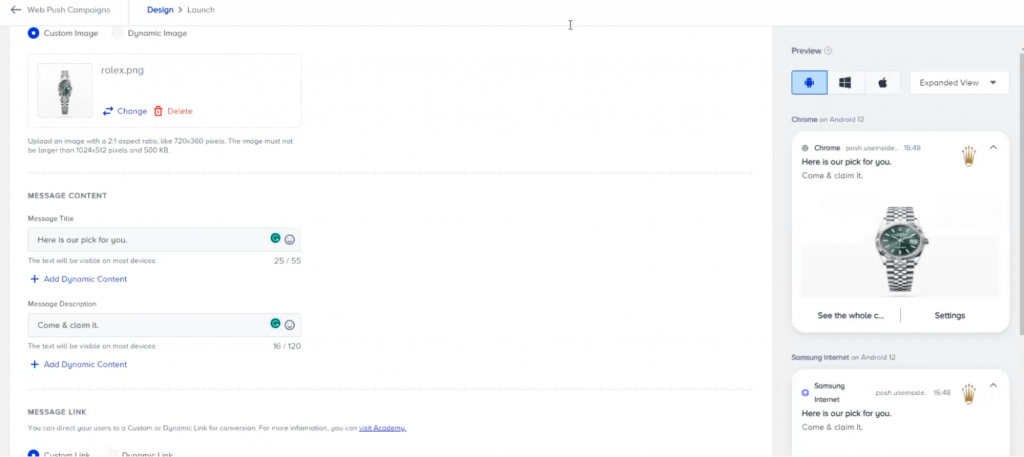
- Engaging mobile stories: Insider has a special product called InStory that enables you to add Instagram-like stories to your site or app. This is a great way to drive new product discovery, conversions, and revenue.
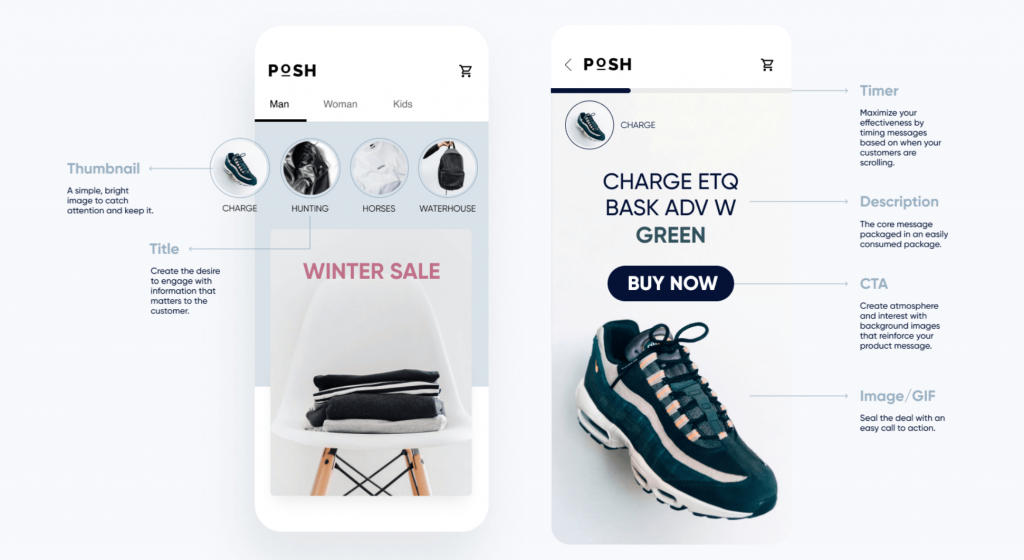
Bonus: AI-powered segment creation
Insider’s Sirius AI™ helps you create segments in seconds with simple text prompts. Instead of manually trying to find profitable segments, you can now simply input your use case and your expected outcome (e.g., engagement, conversions, or both).
Here’s an example:
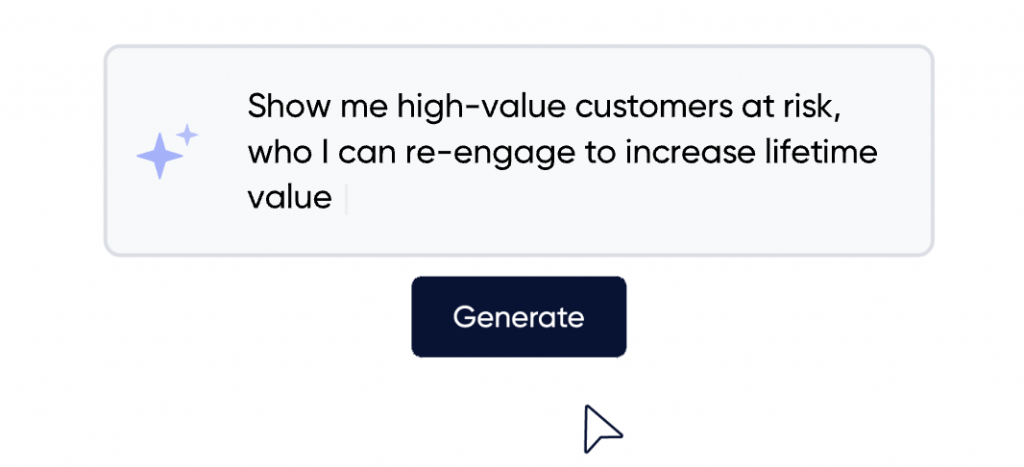
From there, our generative AI will create ready-to-use segments for your business goal and show you the size of your target audience:
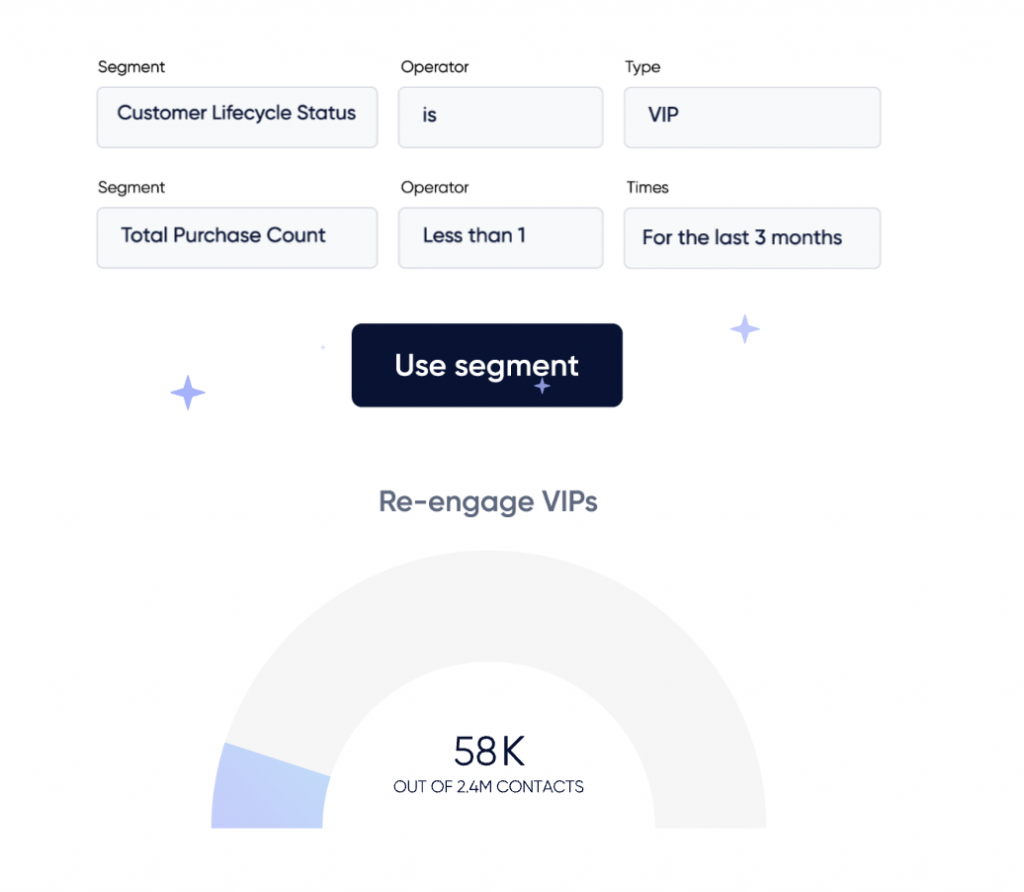
This can save you additional time as you develop your marketing campaigns as you don’t have to manually add various standard, predefined, and predictive audiences. Click here to learn more about the technology behind Sirius AI™.
5 brands that used customer targeting to boost revenue, AOV, ROAS, and more
Below, we’ll showcase five brands that increased conversions, revenue, and profitability through effective customer targeting — some on a single channel or via on a standard customer segmentation characteristic and others across many channels, with complex predictive characteristics. Regardless of the specific use case, all examples below are supported by Insider’s personalization and customer journey orchestration capabilities, including our:
- AI-powered Smart Recommender.
- Customer journey builder (Architect).
- Pre-built templates for all channels and use cases.
- And many others.
How Clarins increased lead capture by 45% with customer targeting
Clarins is a French beauty and cosmetics brand available in over 150 markets and is the #1 premium skincare brand in Italy, France, Spain, and the UK.
The Clarins team quickly outgrew their existing tech stack after experiencing rapid growth across their eCommerce properties. They had a portfolio of single-point customer targeting solutions and needed to overcome two key challenges:
- Getting a 360-degree view of customers to deliver more personalized experiences.
- Getting more potential customers to make purchases (i.e., increasing conversions, revenue, and AOV) after landing on their website.
Using Insider’s “Wheel of Fortune” template, Clarins drove a 45% increase in lead capture, identified 8500+ new users, and had 4000+ customers activate coupon codes.
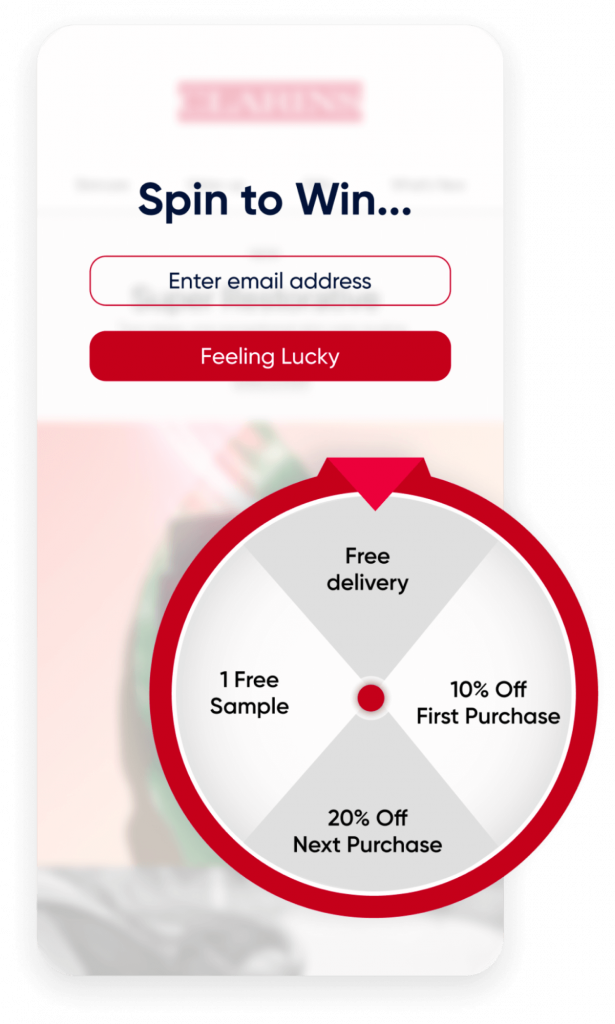
Insider enabled Clarins to identify anonymous users, learn more about their characteristics, and use the template above to inject excitement and urgency into their lead capture strategy.
Our solution also allowed Clarins to personalize product recommendations to these customers based on:
- Location-based bestsellers.
- Recently viewed products.
- Custom criteria.
- And much more.
Here’s what the eCommerce content manager at Clarins has to say about Insider:
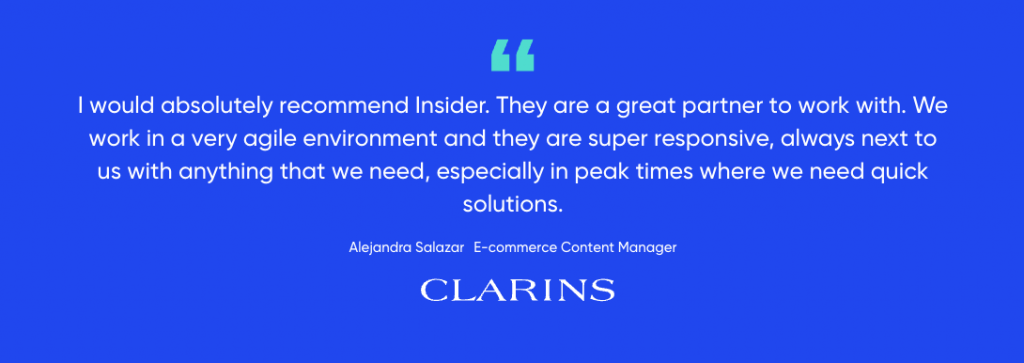
Clarins plans to continue using Insider’s customer targeting features and leveraging our platform’s cross-channel journey orchestration tool, Architect, to further improve its eCommerce KPIs. For more details and a video breakdown of Clarins’ story, check out their case study.
How PizzaPortal achieved a double-digit conversion uplift by targeting customer demographics
A Delivery Hero company, PizzaPortal.pl is the largest and fastest-growing online food ordering service in Poland. With over 2,500 restaurants on its app, the team had to surface the most relevant options for customers to optimize the customer experience and drive conversions.
Looking to deliver in-app personalization and drive conversions, PizzaPortal turned to Insider to target two different groups of people based on market research and psychographic data. Specifically, PizzaPortal’s team wanted to:
- Target users who were predicted to be male on days when there’s an important football match with burger and pizza restaurants.
- Target users who were predicted to be female with a personalized homepage with healthy food restaurants.
Insider’s predictive platform automatically generated behavior-based customer clusters, helping PizzaPortal’s marketing team identify the predicted gender of their customers and drive a double-digit conversion rate uplift.
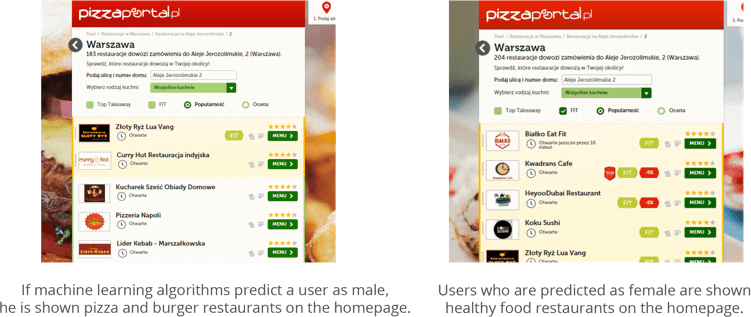
For more details on PizzaPortal’s customer targeting and personalization approach, check out the complete case study.
How Adidas increased AOV by 259% by targeting new and current customers
The largest sportswear manufacturer in Europe and the second-largest in the world, Adidas needed to boost engagement and drive conversions when site traffic peaked during the COVID-19 lockdowns.
They turned to Insider when looking for ways to deliver personalization at scale for their visitors.
Using Insider’s Web Suite and A/B testing capabilities, Adidas built targeted segments of new and returning visitors and offered multiple coupon code options to find out which one had the biggest impact on conversion rates.
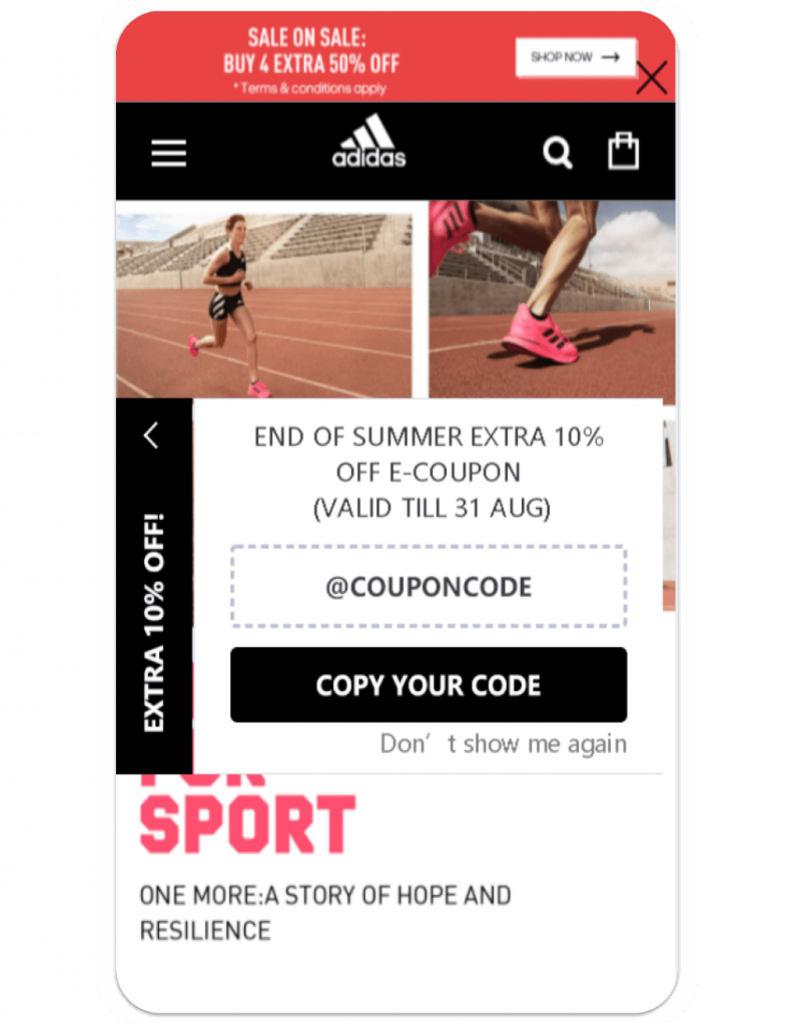
Experimenting with different variations for new and returning visitors, the team optimized their customer targeting efforts, increasing AOV by 259% and conversion rates by up to 13% in just one month.
Adidas continued its customer targeting efforts on its mobile website. Using Insider’s Category Optimizer to rearrange the mobile menu based on the user’s browsing history, the team reduced friction for visitors on mobile and increased conversions by 50.3%.
The team also used Insider’s Smart Recommender to deliver highly personalized recommendations to visitors across channels, in groups such as:
- Trending products.
- Recently viewed items.
- Location-based bestsellers.
- Items frequently purchased together.

This increased Adidas’ homepage conversion rate by 13% in one month and by 7% increase on product pages. To learn more about Adidas’s success and on-site optimization process, click here to view the full case study.
How Slazenger achieved a 49x ROI in 8 weeks by targeting dozens of customer segments
Slazenger is one of the world’s most established sports brands. Looking to engage customers more effectively and improve the ROI from its martech stack, Slazenger turned to Insider to create personalized cross-channel customer experiences.
Their eCommerce team needed to send targeted contextual messaging about products that customers were already interested in. They started by targeting cart abandoners, nudging them to complete their purchases.
Using Architect, Slazenger created personalized messages to nudge cart abandoners across four different channels. First, the customer would receive an automated notification on their preferred channel (email, on-site, or web push). Then, Architect would send them a coupon code via SMS.
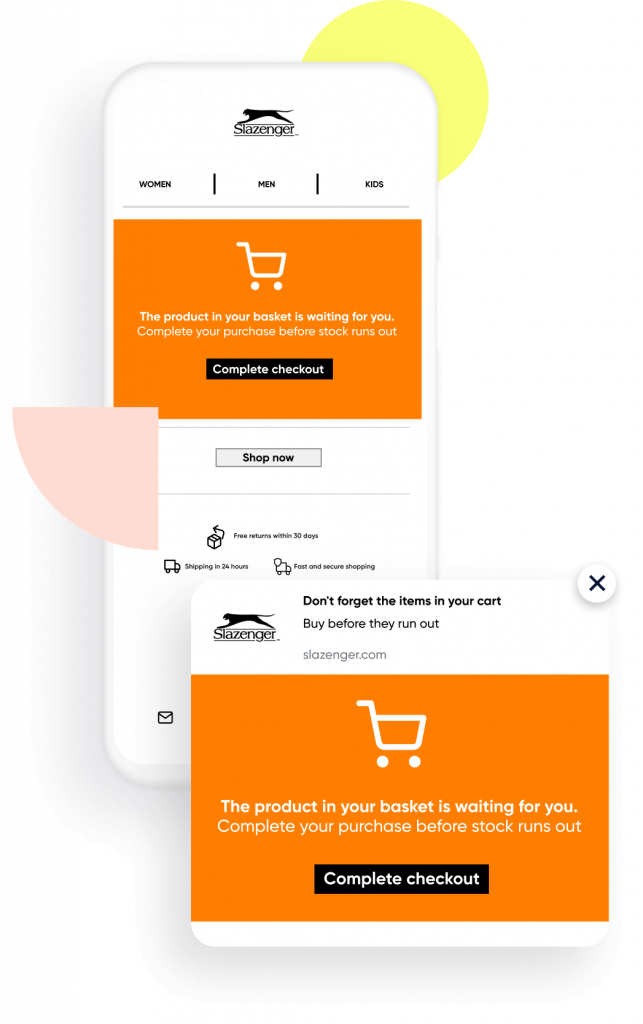
As a result, Slazenger recovered 40% of its potential revenue within a single campaign. Within two months, the company achieved a 700% increase in customer acquisition and 49X ROI with the help of Insider’s customer targeting, personalization, and journey orchestration capabilities.
Here’s what Slazenger’s eCommerce Director has to say about Insider:
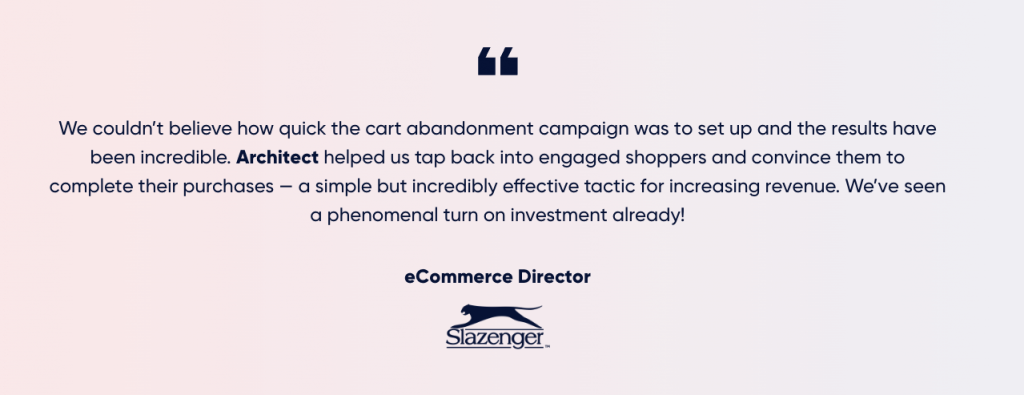
For additional details on how Slazenger used Insider’s cross-channel customer targeting capabilities, check out the full case study.
How Pierre Cardin targeted customers with predictive segmentation and reduced CPA by 67%
Pierre Cardin is an iconic multinational French fashion house that spends a significant amount of its advertising efforts on attracting new customers and building brand loyalty among existing customers.
They needed to reduce cost per acquisition (CPA) and maximize return on ad spend (ROAS) in a competitive ads market. That’s why they started using Insider’s Predictive Ad Audiences (PAA) to segment their user base and tailor their budgets to customers’ behaviors.
The team segmented its customers based on historical, real-time, and AI-powered predicted characteristics such as:
- Customer lifecycle status (e.g., high churn risk).
- Likelihood to purchase.
- Discount affinity.
- And more.
Targeting customers using Insider’s segmentation capabilities allowed Pierre Cardin to achieve multiple wins: a 67.95% decrease in cost per acquisition, a 445% increase in conversion rate, and a 165% increase in the company’s ROAS.
Here’s Pierre Cardin’s Digital Marketing and Social Media Manager on how Insider’s AI-backed technology helped them reach these targets:
“The plan was to use Insider’s AI-backed technology to increase our ROAS. They smashed that target and also brought down our Cost Per Acquisition by 67.95%. This was a huge (and very welcome) surprise!”
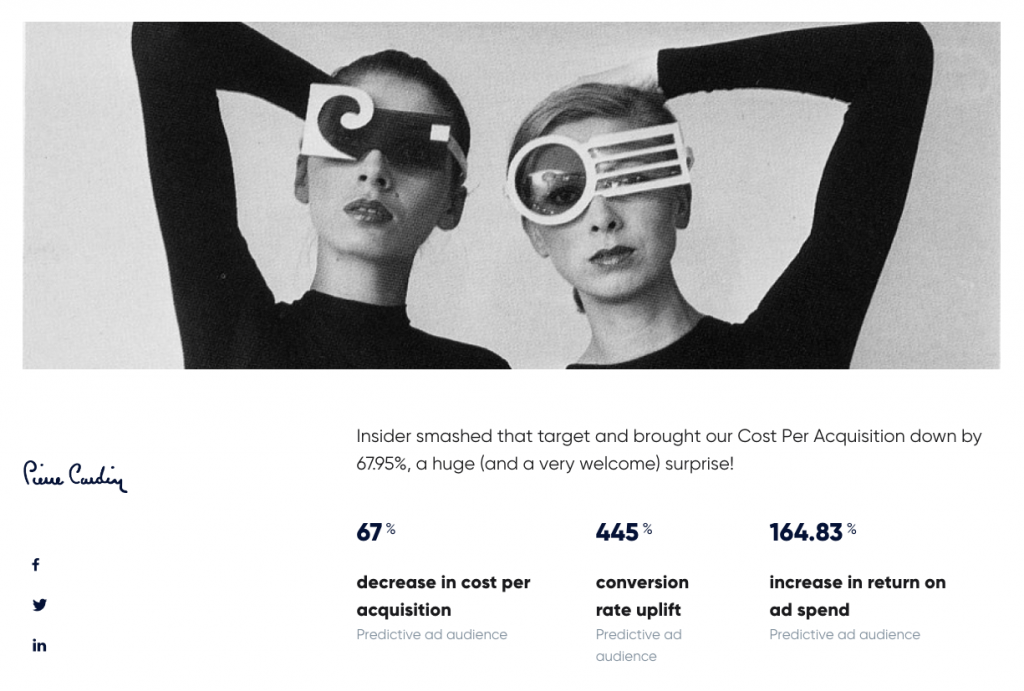
For more details on Pierre Cardin’s use of PAA in their customer targeting, check out the case study.
Target your customers with Insider’s segmentation, personalization, and journey orchestration suite
Insider’s AI-powered segmentation capabilities will help you target customers by hundreds of potential characteristics, with 120+ standard, pre-defined, and predictive attributes.
Our customer data platform (CDP) gives you a granular 360-degree customer view by unifying all your customer data. From there, you can personalize your messaging, content, and product recommendations using:
- AI-powered Smart Recommendations to delight and engage your customers.
- 100+ pre-built templates for all channels and use cases to create campaigns quickly.
- Personalized search results to drive higher conversions and AOV.
- Personalized mobile stories to enable visual product discovery.
- And much more.
Insider’s cross-channel journey orchestration tool, Architect, allows you to build consistent customer journeys across 12+ channels, including SMS, email, WhatsApp, TikTok, and more.
With Insider’s AI-powered intent engine and orchestration capabilities that help you auto-select the best channel or time to send (among other features), it’s easier than ever to target your customers effectively with personalized cross-channel experiences.

